On Saturday, January 11, 76 riders will take part in the Superprestigio Dirt Track at the Palau Sant Jordi arena in Barcelona, Spain. Among those battling for a place in the eight-rider “Super Final” will be the three FIM Grand Prix Roadracing Champions: Marc Márquez (MotoGP), Pol Espargaró (Moto2), and Maverick Viñales (Moto3).
These three, accompanied by former 250cc World Champion and current MotoGP star Álvaro Bautista and former 125cc World Champion Julito Simón, lead a 22-rider field of world-class roadracers, including MotoGP riders Bradley Smith, Aleix Espargaró, Hector Barberá, and a healthy mix of Moto2 and Moto3 stars. The roadracers make up the “Superprestigio Division,” which will run a program of heats, semis, an LCQ, and their own main en route to the “Super Final.”
A parallel program will determine the dirt-track-riders’ main in the “Open” class. Leading the field of non-roadracers is 2013 AMA Grand National Champion Brad “The Bullet” Baker, who will ride with the number-one plate for the first time in 2014.
After the twin mains, the roadracers vs. dirt trackers Super Final between the top three finishers from each class, plus two riders chosen by the promoters, will be held on the tight 220-yard indoor oval. Both Márquez and Baker are guaranteed slots in the Super Final regardless of their results earlier in the evening.
Riders will compete on four-stroke singles “over 250cc.” The only strange regulation, at least for American dirt trackers, is the obligatory use of 17-inch wheels and Michelin roadrace rain tires. The promoter, RPM Racing of Barcelona, introduced this rule due to a shortage of 19-inch wheels and dirt-track tires available in Spain on short notice.
Last October, before the 20-year-old rookie had clinched the MotoGP title, Márquez and his manager, Emilio Alzamora, asked RPM to organize this event, basically to give Márquez something exciting to do during the two-month FIM ban on testing.
At first, RPM wanted to invite all current roadracers but “protect” them from real dirt trackers, who would take part only in a support program. But Márquez didn’t like that idea. He insisted on a Super Final so he could race against “real” dirt trackers.
RPM quickly decided to invite the top three finishers—Brits Alan Birtwistle and the Neave brothers, Tim and Tom—from the European Dirt Track Festival held last October at the Noyes Camp dirt-track school at Motorland Aragon.
At this point, journalist Mark Gardiner read about the race and caught Márquez’s attention with an article that asked if MotoGP riders were “chicken.” Gardiner challenged Márquez to invite newly crowned AMA champ Baker. To the enormous surprise of the promoters, Márquez thought this was a great idea.
At the request of Bradley Smith (new to flat track but very enthusiastic about it as a training method), AMA number 78, Texan Merle Scherb, chief instructor for Colin Edwards' Texas Tornado Boot Camp, was added to the Open field. With Scherb, Baker, and ex-dirt-tracker-turned-roadracer, Kenny Noyes, owner of the Noyes Camp, the event now has three Americans who have done it all, from miles to indoor short tracks.
Other names in the Open class no one this side of the Atlantic has ever heard of are a couple of “sleepers” who could shake things up: Francesc Cucharrera, the five-time Spanish Super TT champion, and FIM Flat Track Cup Champion Fabrizio Vesprini of Italy.
There will also be a support class made up of the top 16 "Junior" (under 18 years old) dirt trackers, all riding identical Noyes Camp Kawasaki KLX140s. This class includes the two sons of 1987 500cc World Champion Wayne Gardner, Remy and Luca, and female roadracer Maria Herrera, who won two CEV Moto3 nationals and was battling for the Spanish title before she crashed out of the final race of the season in Jerez.
RPM hopes to make the Superprestigio Dirt Track an annual event. “We see our event becoming a sort of ‘Chili Bowl’ of European flat track,” said RPM’s Jaime Alguersuari, “and we’d like to invite two or three of the best AMA riders because there can’t really be a world-class dirt-track event without AMA riders.”
Márquez and nine-time world champ Valentino Rossi, who has his own "ranch" in Tavullia, Italy, have adopted dirt track as their preferred training method. "Dirt track is the best way to prepare for riding a MotoGP bike," Márquez said, "because it prepares you to slide in and slide out and to make continual corrections."
Kenny Roberts popularized dirt track as a training method in Spain back in the ’90s. For several years, the three-time world champion operated the Kenny Roberts Training Ranch at the Circuit of Catalunya. With the advent of intrusive traction control, however, “old-school” dirt-track training that produced the American dynasty of roadracers who won 13 of 16 500cc world titles between 1978 and 1993 had become irrelevant.
More recently, riders like retired two-time MotoGP World Champion Casey Stoner (who began, like Gardner and five-time 500cc World Champion Mick Doohan, as an Australian "short-track" scratcher), Márquez, who has used dirt track as his primary training method since he was four years old, and Rossi, a crusader against intrusive electronics, have revalidated the Roberts training method.
Years ago, events like America’s Daytona 200, Great Britain’s Transatlantic Trophy races, Italy’s Imola 200, and the Spanish Superprestigio brought riders from different championships together and gave fans the opportunity to see matchups between the likes of Great Britain’s legendary Mike Hailwood (called out of retirement in 1970 by BSA to battle the rising Japanese tide at Daytona) against the top Americans of the day.
Inspired by mixing the best American and British roadracers at Daytona, the idea for an Anglo-American match-race series was a brainstorm between Gavin Tripp and Bruce Cox. That contest, originally limited to British and American riders on BSA/Triumph triples, brought American roadracing talent onto the world stage.
In 1972, at the second running of the Transatlantic series, Europeans saw Cal Rayborn win three of six races on a Harley-Davidson against the best British and American riders of the day. Kenny Roberts got his first look at Jarno Saarinen at Daytona in 1973, an experience that motivated him to modify his riding and apply his dirt-track style to the asphalt.
In 1974, the Daytona 200 brought Giacomo Agostini into combat with Gary Nixon and Roberts. Ago won after Nixon retired early and Roberts' Yamaha overheated, but the myth that American riders were only good on dirt began to dissolve. Roberts made his first trip outside the US later that spring, was again second to Agostini at the Imola 200 and followed up to win three of the six Transatlantic Trophy races. Roberts was the top scorer, beating Barry Sheene by five points, and exploded the myth that American racers couldn't ride in the rain.
The Superprestigio was a latecomer to the list of big “Internationals.” The event was held for the first time in 1979 at the twisty Calafat Circuit, 90 miles south of Barcelona and in the shadow of a nuclear power station. The original Superprestigio races, organized by magazine publisher Alguersuari, were held in the fall after the Grand Prix season ended and confined to the smaller classes. Top Spanish riders in 50cc (80cc after 1983) raced their European rivals in an end-of-the-season bragging-rights event.
In 1989, however, American John Kocinski, who had shocked the GP world by winning in one-off 250cc starts at the Japanese GP at Suzuka and USGP at Laguna Seca, was signed to ride. This was his first outing in Europe, and he stole the show, beating the best Spanish and international GP stars in the 250cc class, among them reigning world champion Sito Pons, plus Juan Garriga, Reinhold Roth, Alex Barros, and great 1990 rival, Carlos Cardús. (Kocinski would win the 1990 250cc GP title from Cardús on the final day of the season.)
In all, the Superprestigio was run 15 times at five different Spanish tracks. In 1991, Doohan, Gardner, Kocinski, and Juan Garriga rode 500s at the new Circuit of Catalunya—the first time the event was held on a track big enough and safe enough for the premier-class bikes. Doohan won on points; reigning world champion Rainey was contracted to race, but he was injured while testing in Malaysia.
Over the years, three future American world champions made their European debuts at the Superprestigio: Kocinski, Kenny Roberts Jr., and Colin Edwards. Other Americans to compete in the event were Randy Mamola, Rich Oliver, and Chris D'Alusio. Kocinski is the only American ever to win the Superprestigio.
The last Superprestigio roadrace was held at Cartagena, Spain, in 1996. Dorna contracts no longer allow premier-class riders to take part in other events on Grand Prix equipment, and factories and sponsors were not willing to let their top riders risk themselves in non-championship roadracers. No one ever thought about banning GP riders from dirt-track races.
Dirt-track races were organized by RPM at the Palau Sant Jordi in 1990 and ’91, and AMA stars Jay Springsteen and Steve Morehead had a fairly easy time against Spanish enduro riders, several roadracers trying on a steel shoe for the first time (among them, Alberto Puig), and Spanish motocrosser Toni Elias Sr., father of the 2010 Moto2 world champion.
Baker, the first reigning AMA Grand National champion ever to race in Spain, will probably face stiffer local and European opposition than Springsteen and Morehead did since he will take on not only several of the best dirt trackers in Europe, but also a highly motivated Márquez, who is very serious about his dirt-track riding.
The world champion was quick to take Gardiner’s bait to invite the AMA number one to his party. “Great idea!” he reportedly said. “I want to race the best.” When you race against AMA Pro Flat Track’s number-one rider, that’s what you get.










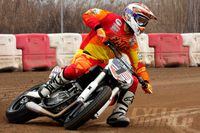
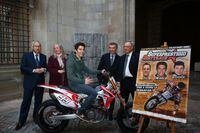
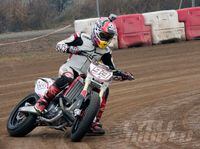
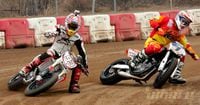
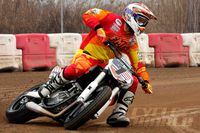
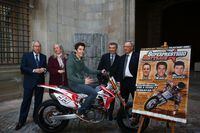
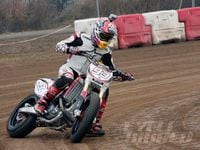
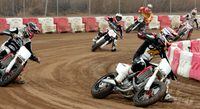
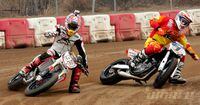

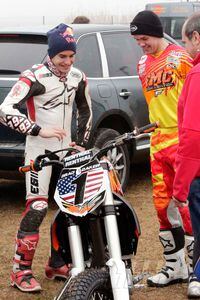
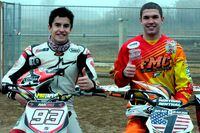
/cloudfront-us-east-1.images.arcpublishing.com/octane/X5TB7BDV4BA2RPSY54ZGK27RP4.jpg)
/cloudfront-us-east-1.images.arcpublishing.com/octane/REUHOJXRDBGZ5IHBYZCCBCISPA.jpg)
/cloudfront-us-east-1.images.arcpublishing.com/octane/52LGJTCKBFEHDF7S7H4CVUIMGM.jpg)
/cloudfront-us-east-1.images.arcpublishing.com/octane/YMWAIPIPSJAOXOU3QMJMGH37OM.jpg)


/cloudfront-us-east-1.images.arcpublishing.com/octane/EJ6KZRGAYBCVXNL2PJXL37UVWQ.jpg)
/cloudfront-us-east-1.images.arcpublishing.com/octane/AAN4TI76M5H5JMUVEIGASWXBDU.jpg)
/cloudfront-us-east-1.images.arcpublishing.com/octane/P3RXD2UCPFF37CMB7CHPVKXORY.jpg)
/cloudfront-us-east-1.images.arcpublishing.com/octane/VZEG2EJI2RDFZNHLRZMU56MD3Q.jpg)
/cloudfront-us-east-1.images.arcpublishing.com/octane/GVJQO5FFOFBWNGODOBRB4FBAW4.jpg)
/cloudfront-us-east-1.images.arcpublishing.com/octane/BIVAK2SFIBDJJM25E7I5VU2FJE.jpg)
/cloudfront-us-east-1.images.arcpublishing.com/octane/CH5VX52UG5CFHOVH5A6UYEFWWA.jpg)
/cloudfront-us-east-1.images.arcpublishing.com/octane/ZVGJNGZRU5C33N7KN23BBFKSC4.jpg)

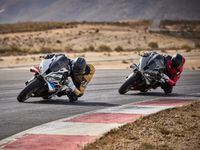
/cloudfront-us-east-1.images.arcpublishing.com/octane/CZ5OM3E43ZEXJHY7LCYXCHLIKI.jpg)
/cloudfront-us-east-1.images.arcpublishing.com/octane/DF5T4K5KPZFJXFCTGPYR77PKJM.jpg)
/cloudfront-us-east-1.images.arcpublishing.com/octane/RMCT2KVQBJHBZMRTSLOVPMOILU.jpg)
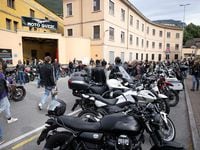
/cloudfront-us-east-1.images.arcpublishing.com/octane/K45KB2XHQVA65DX7VN4ZSMT2BI.jpg)
/cloudfront-us-east-1.images.arcpublishing.com/octane/FNHXQQ56BRD7TO4YIJ453PNG2M.jpg)
/cloudfront-us-east-1.images.arcpublishing.com/octane/OIKJC4JA3ZH7BMKUGWYKBIY5FA.jpg)
/cloudfront-us-east-1.images.arcpublishing.com/octane/MT2SAEWY6FDXFBYSLDE3AEFDTM.jpg)